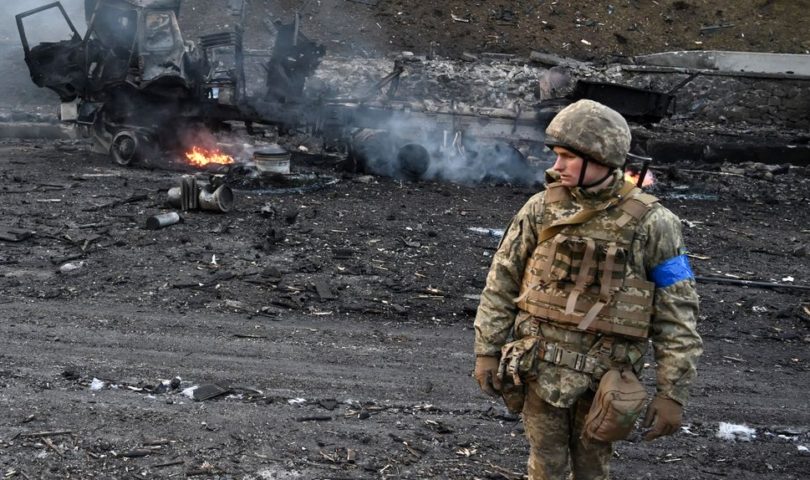War is a word that often brings images of fire, bombing, chaos, and death immediately to mind, but there is another side of war that many don’t consider. For example, people living in war-torn countries often suffer from financial ruin and severe inflation as well. With the Russian invasion of Ukraine dominating headlines, it is important to consider how modern warfare wrecks every aspect of life.
To begin with, the physical destruction that comes with war is tremendous. According to recent research, experts estimate that one-third of the total housing stock across Germany was destroyed by air raids during World War II. In a less extreme example, as of 2017, an estimated 7 percent of Syria’s housing stock has been destroyed with 20 percent partially damaged. This kind of destruction takes decades to rebuild, and even these statistics understate the sheer ruination of infrastructure that war brings to cities.
With destruction of buildings comes a high number of casualties, both military and civilian, which is probably the most impactful argument against war. Innocent lives are lost, young people give up their futures, and families are torn apart. In World War II, 50-56 million fatalities were recorded as a result of direct combat, with an estimated total of 70-85 million deaths, which is about 3% of Earth’s population at the time. About 50 million, a huge majority of deaths, were civilian fatalities.
These numbers may still be extremely off, because different sources in different countries report very different statistics, because of complications caused by the Holocaust and other war crimes that may not necessarily be caused by direct combat.
Outside of the obvious consequences of destruction and death, war indirectly affects all aspects of life for everyone in the countries involved and possibly even the entire world. There is a direct positive correlation between war and national debt, inflation, and other economic benchmarks like unemployment rate.
In general, war drains the money supply of a country, consuming resources including weapons, humanitarian aid, medical aid, and other basic necessities, which pour into the war-torn region and severely bring down the economy.
Although the economies of a couple of countries directly involved in the war suffer the most, there are often ripple effects across the world, impacting imports and exports, trade, currency, and potentially affecting global markets.
The situation in Ukraine is a prime example of a war halfway across the globe affecting everyone in the U.S. After President Biden banned the import of Russian oil, natural gas, and coal earlier this month in order to punish Russia for its invasion of Ukraine, the average gas price in the U.S. skyrocketed to a record $4.33 per gallon on March 11. Some locations in California have reached six or even seven dollars per gallon, and although these numbers continue to fluctuate, the insanely high prices are just another indication of how widespread the effects of war are.
Perhaps the most harmful effects of war are the intangible ones, those that aren’t measurable and don’t get as much attention as they deserve. These impacts include mental health, morale, and trauma struggles that almost certainly accompany war.
A population scarred by the trauma of a recent war will not live life the same way, decreasing general morale and potentially triggering anger at the government for participating in the war. PTSD, anxiety, and chronic depression are extensive throughout the population, even if they didn’t fight on the battlefield.
The final and one of the most important factors to consider in a war is how much recent advances in technology have made war so much more deadly and harmful. Science and technology have exponentially improved over the last couple of centuries, which includes the development of long-range missiles, stealth machinery, and so-called weapons of mass destruction, including nuclear and chemical weapons.
Millions can now be killed within minutes, and the equipment will only become more dangerous as countries try to compete with each other for better technology.
To sum up all these facts and statistics in three words: war is atrocious. It may have been prevalent thousands of years ago, but in the 21st century, war has far-ranging effects involving not just casualties and amplified destruction, but also economic impacts that affect every single person around the world.
Fighting is never worth it nowadays, and as a society, we have and need to continue promoting diplomacy and negotiation rather than aggression and war.

